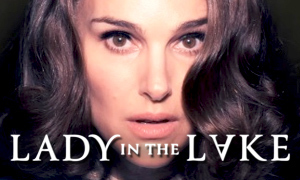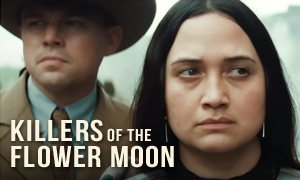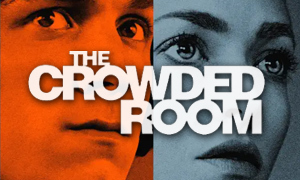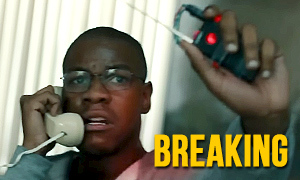I Am the Night: History vs. Hollywood
| REEL FACE: | REAL FACE: |
India Eisley
Born: October 29, 1993 Birthplace: Los Angeles, California, USA | Fauna Hodel
Born: August 1, 1951 Birthplace: San Francisco, California, USA Death: September 30, 2017, California, USA (breast cancer) |
Jefferson Mays
Born: June 8, 1965 Birthplace: Connecticut, USA | George Hodel
Born: October 10, 1907 Birthplace: Los Angeles, California, USA Death: May 16, 1999 (heart failure) |
Connie Nielsen
Born: July 3, 1965 Birthplace: Elling, Frederikshavn, Denmark | Dorothy Huston Hodel
Born: April 15, 1906 Birthplace: New York City, New York, USA Death: March 8, 1982, Los Angeles, California, USA Renamed Corinna for the film |
Golden Brooks
Born: December 1, 1970 Birthplace: Fresno, California, USA | Jimmie Lee Greenwade
Born: abt 1919 Birthplace: Mississippi, USA Death: November, 1976, Reno, Nevada, USA |
Kassidy Slaughter
Born: September 4, 2002 | Tamar Hodel
Born: March 24, 1935 Birthplace: California, USA Death: October 3, 2015, Hawaii, USA |
Did the real Fauna Hodel grow up poor in Nevada?
Yes. A fact-check of the I Am the Night miniseries confirms that Fauna grew up in poverty just outside of Reno, Nevada. Her adoptive parents were black. Her mother was a maid and her father was a shoe shine man. They raised her in Sparks, a town just east of Reno. When she was a child, she learned that she had been given away as a baby and had actually been born at Saint Elizabeth's Hospital in San Francisco. The birth certificate that her adoptive mother showed her listed her as biracial. It would take years for her to discover that her biological parents were actually white.
Was Fauna really called "Pat" by her black family?
Yes. In researching the I Am the Night true story, we learned that Fauna's adoptive parents had referred to her by the nickname "White Patty" due to her light skin color. Though they never legally changed her name, they decided to call her Patricia Ann Greenwade. Believing that she was of mixed race, she grew up waiting for her skin to darken, but it never did. Fauna said that she "didn't know who she was," describing herself as a "lost soul." She endured prejudice from both blacks and whites, and she didn't feel like she fit in with either. She did say that despite their teasing, her adoptive family showed her lots of love, especially her grandmother, who taught her about God. -ACSZ Intellectual Salon
Is Chris Pine's character, reporter Jay Singletary, based on a real person?
No. During an interview with CBS This Morning, director Patty Jenkins said that Chris Pine's character represents all of the males who were in the periphery of Fauna Hodel's story. So, at best, Jay Singletary is a combination of a number of different reporters and detectives who investigated the Black Dahlia murder, but there is no single person on which the character is based. There was no Jay Singletary.
How did Fauna Hodel discover that she was given away as a baby?
Fauna knew she was adopted from an early age (in reality, she was given away and had never been officially adopted). Her adoptive mother, Jimmie Lee, had showed her birth certificate to her, which listed her birth mother's name, "Tamar Hodel". It listed her father as "Negro", his "name withheld". Jimmie Lee taunted Fauna by telling her that she could pick up a phone and call Fauna's grandfather (by birth) anytime she wanted.
Early on, Fauna began to wonder who she was. If she was mixed race, then why wasn't her skin darkening? Who was this mysterious grandfather? The title of Fauna Hodel's autobiography, One Day She'll Darken, comes directly from these questions that had begun to consume her. "I grew up feeling like Nancy Drew," said Fauna (ACSZ Intellectual Salon). With her skin showing no signs of darkening as she grew, her adoptive mother told her to tell other people that she was her babysitter. "She didn't want people to try and have me taken away," recalled Fauna (Behind the Smile Fauna Hodel Documentary).
Was Fauna's adoptive mother really an alcoholic?
Yes. Her adoptive mother was an alcoholic who could at times be abusive. "My mother was in and out of jail," said Fauna. "She was just always fighting. In a bit of the same breath, it was a love—hate relationship. She loved me because I was her baby, but she hated my whiteness." -Behind the Smile Documentary
Did Fauna really team up with a reporter to investigate the mystery surrounding her birth?
No. The I Am the Night true story is a bit less dramatic, despite the revelations being almost just as shocking in real life. Fauna never teamed up with a ruined reporter to investigate the mysteries of her origin. As stated earlier, Jay Singletary is a fictional character.
How exactly did the real Fauna Hodel learn the truth about her birth?
Growing up believing she was of mixed race, Fauna endured prejudice from both whites and blacks. She struggled through years of poverty, bigotry, an alcoholic mother, sexual abuse, a pregnancy at 16, and loss. Feeling like she was without an identity, she first started researching the mystery of her birth around age 12. "I started researching. I would study my birth certificate. I knew which hospital I was born," said Fauna.
While working at Saint Mary's Hospital in Reno, Nevada in her early twenties, a nun named Sister Hillary befriended her. Fauna told the nun about the mystery of her birth. She explained to her that from her birth certificate she knew that she had been born at Saint Elizabeth's hospital in San Francisco. Wanting to help, the nun took a trip to Saint Elizabeth's and dug through their records. She discovered that Fauna's grandfather was a doctor named George Hodel. "I would ultimately find my birth grandfather, George Hodel, who lived in Asia." Fauna spoke to him by phone and told him that she wanted to meet her birth mother. He tried to dissuade her but ended up telling her that his daughter, Tamar, was living in Hawaii.
Fauna simply called the operator and asked if they had a number for a "Tamar Nais Hodel" living in Hawaii. Just like that, they were in touch. In 1974, around the age of 23, Fauna traveled to Hawaii to meet her birth mother, who gave her answers to some of the questions that had been plaguing her. The I Am the Night TNT miniseries somewhat fictionalizes how Fauna learns of this information, but the information that's revealed stays in line with the true story.
Fauna's birth mother, Tamar, told her about an incestuous relationship that she had with her father, George Hodel, when she was a child. Fauna began to fear that she was the product of that relationship, but Tamar told her that while she did become pregnant by George, she had aborted the baby. Fauna was instead born out of a subsequent encounter she had with a white man, who raped her.
If this was true, then what was written on Fauna's birth certificate was indeed false. Tamar and her family had lied. "I wanted to be black," Fauna later said. "I wanted to belong. I wanted to be a part of my [adoptive] family" (ACSZ Intellectual Salon). Tamar's own children and her mother had warned Fauna that Tamar was a liar and a manipulator, who often told people what they wanted to hear. Of course, Fauna would certainly not want to hear that she was a product of incest. According to Fauna, it would take her over 20 years to get past her distrust toward Tamar and finally let Tamar into her heart.
Did Fauna's grandfather, George Hodel, really spy on her?
Yes. Fauna Hodel talks quite extensively about this in her memoir One Day She'll Darken. She notices the same people following her on numerous occasions. Before she knew what her grandfather looked like, an older gentleman got out of a limo and approached Fauna and her daughter Yvette in San Diego. He stopped in front of them, stared at them, but didn't say anything. Then he returned to his limo. Through pictures, Fauna later discovered that the man was her grandfather, George Hodel. Fauna and her husband Billy also believed that their phones were being tapped, since they could hear an echo and a clicking sound during calls.
Before she died, Fauna's mother, Jimmie Lee, told her that a man who posed as a chauffeur had been watching Fauna all her life, keeping an eye out for her. She said that he had to leave the country since he apparently knew something about the Black Dahlia murder. Fauna knew immediately that she was referring to George Hodel.
Did Fauna's cousin die suspiciously?
Yes. Fauna and her husband Billy became even more suspicious that their phones were being tapped not long after Fauna's cousin Johnny called her out of the blue and asked if he could come visit. He kept telling her how attractive she was and called her "baby" and "sugar," telling her that he wanted to "feast his eyes on a sexy thang like herself." She hadn't seen him in several years, but he didn't sound like the person she had known. He asked her if she remembered when they used to play under the bed together. He was slurring his words. Fauna brushed off the strangeness and told him he could come visit, not fully realizing how much he'd changed. During the call, she heard the same suspicious echo and clicking sound, as if someone was listening in.
Johnny never showed up on the day he was supposed to arrive. Instead, Johnny's sister, Barbara, called and told Fauna that Johnny had been murdered, drowned in the water. At the funeral, Fauna wondered why the casket was closed. She was told that his body had been mutilated, his penis cut off and shoved in his mouth. Fauna and her husband began to believe that whoever had been listening in on their calls might be responsible for Johnny's murder. They believed that person was George Hodel. Fauna wondered whether Johnny had been killed because of the sexual advances he had made toward her on the phone.
Why was Fauna Hodel given away as a baby?
In 1949, Dr. George Hill Hodel was accused of molesting and having sex with his 14-year-old daughter, Tamar. It has been speculated that Fauna was Tamar's daughter from that incestuous relationship. This meant that Dr. Hodel could have been both Fauna's father and grandfather. Three witnesses at his incest trial testified that they saw Dr. Hodel engaging in intercourse with his daughter, Tamar, but the charges were dropped later that year. Fauna herself isn't sure what to believe, since she says that, at the time, Tamar had recently been released from a juvenile detention center for being a pathological liar (a claim that Tamar's mother stressed in order to help clear her husband of the incest charges). -ACSZ Intellectual Salon
After Tamar gave birth to Fauna, she told the staff at the San Francisco hospital that the "unnamed father was a negro." Decades later, she would explain to Fauna that she did this "because in my little world I believed that black people were made of far superior stuff than the whites I knew" (One Day She'll Darken). At the time Tamar gave birth, she had been a ward of the court. She said that she was told she could not keep Fauna, which she later believed was a lie. It's possible that the Hodels did not want what they believed was a mixed-race baby associated with the family.
Her baby was given away at the Riverside Hotel. A woman approached a black restroom attendant at the hotel/casino and asked her if she wanted a yet-to-be-born, mixed race baby. Believing that it was unwanted by the family because it was biracial, the maid, Jimmie Lee, eventually agreed and accepted the baby after it was born. Jimmie Lee took Fauna home to Sparks, Nevada where she and her common law husband raised her. -SteveHodel.com
Was Fauna Hodel born out of an incestuous relationship between her mother, Tamar, and her grandfather, George Hodel?
This question has generated the most curiosity surrounding the I Am the Night true story. After all her research into her past, Fauna herself said that she was not sure if George Hodel was her father, in addition to being her grandfather. She said that she certainly hopes not. While some have speculated it to be true, Fauna's mother, Tamar, told her that she was the product of a subsequent sexual assault by a different white man.
Tamar had always maintained that she was sexually assaulted by her father, George Hodel. She told Fauna that the incestuous relationship with him did lead to a pregnancy when she was 12, but that she had an abortion. However, abortion wasn't legal in California or the U.S. at the time, and wouldn't be for another two decades, meaning that she would've had to have had an illegal abortion. This is certainly possible, given that George Hodel's son, Steve Hodel, believes that his father was performing illegal abortions at the time. Fauna herself was never certain if Tamar's explanation was a lie or the truth.
What is fairly certain, and prominently depicted in the movie, is that Fauna's grandfather, George Hodel, spied on her for much of her life. Was he worried that Fauna would uncover the secret that would destroy him? Was he trying to protect a child who was actually his own? Or was he simply watching over a granddaughter who had been given away by his daughter?
Who was the Black Dahlia?
The Black Dahlia was the name given to 22-year-old murder victim Elizabeth Short, an aspiring actress whose body was found on the chilly morning of January 15, 1947 in the Leimart Park area of South Los Angeles. What made the murder so shocking to the LAPD, all of Los Angeles, and indeed the world, was that Short's body was not just dumped on the side of the road. Her nude body had been posed and was lying in two sections. She had been precisely severed in half at the waist. There were cuts all over her body, rope burns and defensive wounds on her wrists, hands, and ankles, and one breast had been cut off.
She had clearly been tortured, with the most haunting wound being the "Glasgow smile" that the killer had inflicted to her face. This horrific wound is created by using a knife or sharp object to slash a victim's face from the corners of the mouth up to the ears. The wound makes it appear as if they are smiling.
There was no blood on the grass near Elizabeth Short's body, leading investigators to conclude that her body had been drained of blood before being left on the side of the road roughly 10 feet from the sidewalk. Given the details of the murder, the LAPD reasoned that the killer was likely a doctor who had known Short. Eventually, this led them to Dr. George Hodel, who had caught the attention of the police after he'd been accused of molestation. -The 405
Why was Elizabeth Short called "the Black Dahlia"?
At the time, George Marshall's 1946 noir film The Blue Dahlia starring Veronica Lake and Alan Ladd was a popular movie and was still in Los Angeles theaters. Photos of Elizabeth Short dressed in black were sent to the press after her body was discovered, which prompted the Herald-Express to dub her "the Black Dahlia".
Could Dr. George Hodel have been a serial killer?
That's what his son, former LAPD homicide detective turned private investigator Steve Hodel (Fauna's uncle), believes. He is the author of the New York Times Bestseller Black Dahlia Avenger, a popular book on the infamous Black Dahlia murder case. He is confident that not only was his father the Black Dahlia murderer, Dr. George Hodel was linked to other murders in California, Chicago, and later Manila, where he ended up after fleeing the United States. All of those murders involved corpses that were dissected and posed in a fashion similar to Elizabeth Short. However, some have criticized Steve Hodel's theories, labeling them as highly speculative.
How exactly was Fauna Hodel connected to the 1947 Black Dahlia murder?
After Dr. George Hodel landed on the LAPD's radar when he was accused of molesting his 14-year-old daughter, Tamar, the police began looking at him as a suspect in the unsolved Black Dahlia murder case, which by then was over two years old. After the police tapped Dr. Hodel's phones and put him under surveillance, they overheard him making various incriminating statements. "Supposin' I did kill the Black Dahlia, they couldn't prove it now. They can't talk to my secretary anymore because she's dead," he told someone else. He quickly became a prime suspect in the case.
Fauna was possibly the product of George Hodel's incestuous relationship with his daughter, Tamar, for which he stood trial. However, the charges were dropped. Fauna, who had seemingly been hidden away after birth, was the missing piece whose mere existence might be proof that Hodel had molested his daughter, making it even more likely that he was also capable of the Black Dahlia murder. -The 405
Has the real Fauna Hodel ever publicly shared her story?
Yes. I Am the Night is based on Fauna Hodel's autobiography, One Day She'll Darken. The information in the book is in part derived from journals that Fauna had written throughout the first 25 years of her life. She had also spoken publicly about her story on several occasions (watch a video of Fauna Hodel sharing her story). Fauna Hodel’s death occurred in September of 2017. Director Patty Jenkins first spoke with Fauna ten years before the release of the I Am the Night miniseries. She was well aware that the project was underway.
Have there been any other movies made about Fauna Hodel?
Yes. An unreleased 1991 film titled Pretty Hattie's Baby is based on the early life of Fauna Hodel. Alfre Woodard portrays Fauna's adoptive mother. The film deals with Fauna's adoptive family taking in a light-skinned child with a mysterious past, which includes her grandfather being a suspect in the Black Dahlia murder case. Fauna was heavily involved in the production, but legal issues and a lack of money led to the film being shelved. In this Fauna Hodel interview from the early 1990s, Fauna says that there were only two days of filming that remained on the near $7.5 million production, in addition to editing time. She suspects that her elusive grandfather, George Hodel, had something to do with why the movie never saw the light of day, since its release would have further tarnished his reputation. The movie also stars Charles S. Dutton, Bobby Hosea, Tess Harper and Jill Clayburgh.
Did Fauna Hodel have any children?
Yes. "I have two children. I had my first daughter [Yvette] when I was only 16," said Fauna, "a biracial child who really is mixed. And my youngest daughter [Rasha] is 33, blond, blue eyes, different father. My children represent the color of love." -ACSZ Intellectual Salon
Fauna Hodel Interviews & Related Videos
Dive deeper into the true story behind I Am the Night by watching interviews with the real Fauna Hodel and her birth mother, Tamar Hodel.







